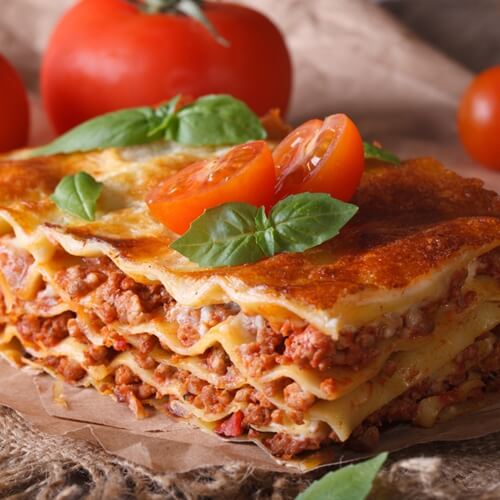4 Ideas For Better Lasagna
It may be difficult to top the lasagna you grew up eating. However, anyone who is taking online culinary courses should try out a few approaches to this Italian classic. Give these combinations of pasta, sauce and meat a chance and you may discover a new favorite.
1. Perfect your lasagna Bolognese
Preparing lasagna Bolognese means emphasizing the meaty ragu sauce that gives the dish its name. Bon Appetit provided directions for the sauce that require a can of crushed tomatoes, onion, carrot, celery, olive oil, black pepper, white wine, milk, chicken broth and three kinds of meat: ground beef chuck, ground pork and pancetta.
You’ll also craft a bechamel, or white sauce, by warming butter, gradually whisking in flour and then simmering. Nutmeg and kosher salt contribute additional flavor. In a baking dish, build seven layers consisting of cooked noodles, a small portion of Bolognese sauce, bechamel and Parmesan cheese.
2. Pack it with meatballs and sausage
Another meaty option is a Neapolitan lasagna. This variation is made with a ragu that features both sausage and meatballs. Serious Eats recommended cooking and shredding pork spare rib meat before combining with bread, eggs, Parmesan, garlic and parsley. Reduce this mixture to a paste in a food processor. Then, form the meatballs and brown them in a skillet with vegetable oil.
Each layer features pasta, a mixture of ricotta cheese and sauce, meatballs, sliced sausage, mozzarella, more sauce and Parmesan. Bake the lasagna, covered in foil, for half an hour in an oven set to 300 degrees Fahrenheit. Remove the foil and bake another 20 minutes. Give the dish 10 minutes to rest and cool before serving.
3. Go vegetarian
If these lasagnas sound like they contain way too much meat, you might prefer a vegetarian alternative. Fortunately, The Kitchn has a recipe that includes plenty of cheesy flavor but none of the beef or pork. You’ll include two and a half cups of ricotta and two cups of mozzarella as you layer the noodles.
Standing in for the meat is a combination of vegetables and herbs such as mushrooms, onion, zucchini, bell pepper, eggplant, spinach, thyme and oregano. After this tasty assembly spends an hour, covered, in an oven set to 400 degrees, remove the foil and throw on another cup of mozzarella. Melt this layer with another ten minutes in the oven, and then briefly move the lasagna to the broiler to achieve a nicely browned top.
4. Use the slow cooker
If you plan ahead, you can also take advantage of a slow cooker’s convenience of to prepare a lasagna. Real Simple’s directions call for mixing diced tomatoes, garlic, oregano, salt and pepper in one bowl and Parmesan, ricotta, parsley and pepper in another. Place a spoonful of the tomato mixture in the slow cooker, followed by noodles, then Swiss chard, the cheese mixture, more of the tomato mixture, and finally some mozzarella. Add more noodles and repeat.
Once you’ve put your layers together, set the slow cooker to low heat. Cover and let the lasagna cook for three to four hours. Allow 10 minutes for the dish to rest before serving.
You can take lasagna in many irresistible directions when you apply culinary academy training. Try out a few different approaches and see which one works best for your own style of cooking.



